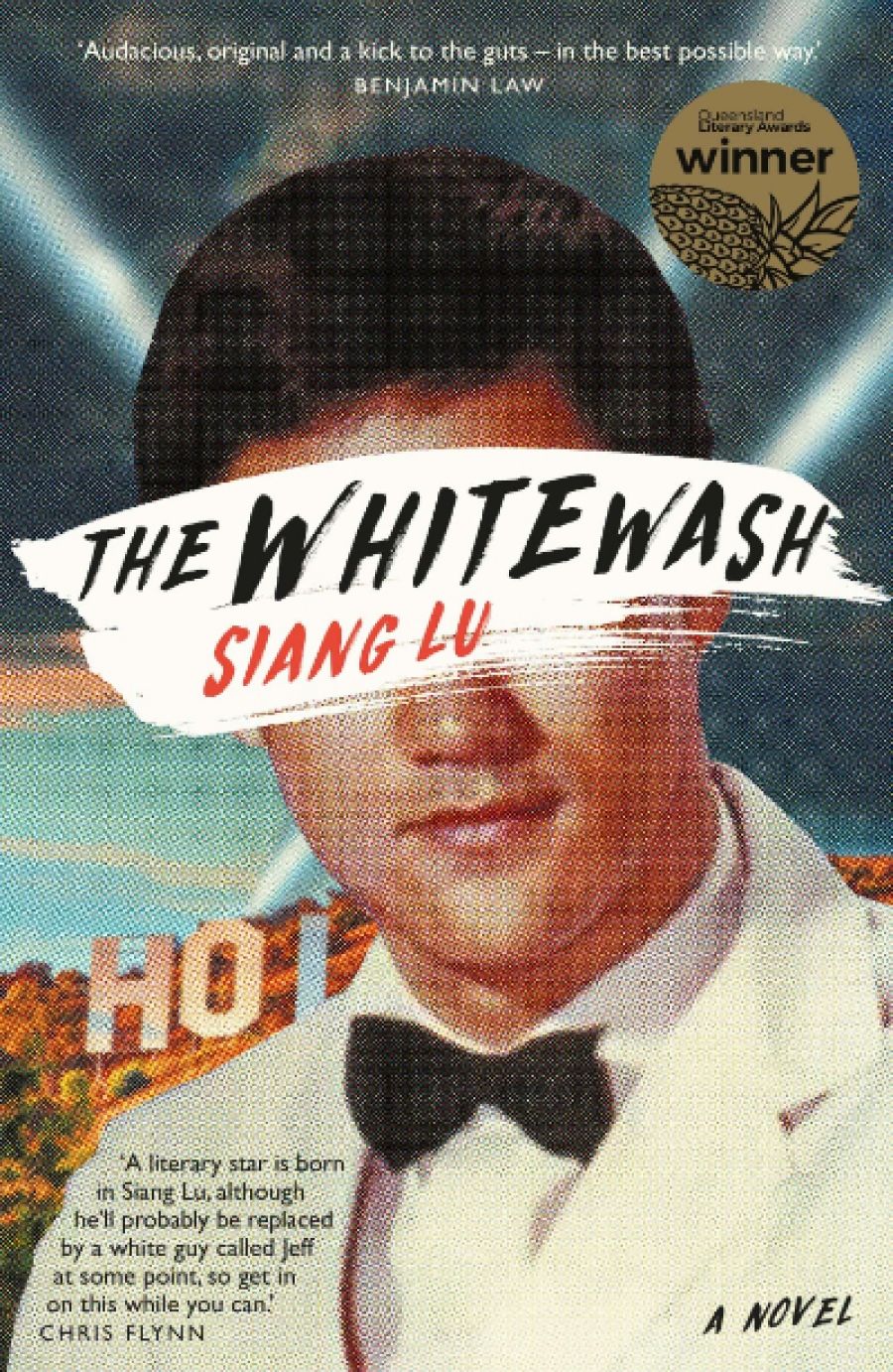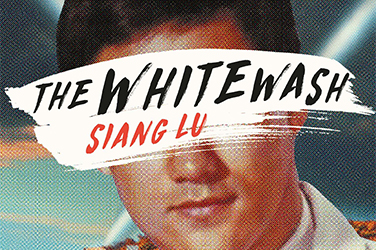
- Free Article: No
- Contents Category: Fiction
- Review Article: Yes
- Article Title: Dreams and debris
- Article Subtitle: Siang Lu’s ambitious début novel
- Online Only: No
- Custom Highlight Text:
Hong Kong’s hottest property, JK Jr, has it all: boyish charm, acting chops, and a set of ‘crazy ripped’ abs. He’s set to star in Brood Empire, a spy thriller backed by the financial might of Hollywood and China, and destined to smash box-office records in all markets. However, the new era of mainstream western films featuring hunky Asian male leads must wait, as the whole enterprise suddenly falls apart. Enter a not-so-humble web tabloid to piece together this sordid tale of hubris and unfulfilled dreams from the debris.
- Featured Image (400px * 250px):

- Alt Tag (Featured Image): Dilan Gunawardana reviews 'The Whitewash' by Siang Lu
- Book 1 Title: The Whitewash
- Book 1 Biblio: University of Queensland Press, $32.99 pb, 282 pp
- Book 1 Readings Link: booktopia.kh4ffx.net/yR17LG
Conveyed as an oral history – less Svetlana Alexievich and more Garth Marenghi’s Darkplace – for the fictional web publication Click Bae, the fiasco of The Whitewash is recounted by a roll-call of eccentrics and narcissists working in and around Brood Empire’s production, in sleazy film companies, in stodgy academic circles, and in the dank depths of online clickbait journalism. Running in parallel to this narrative in Siang Lu’s ambitious début novel is a fascinating timeline of Asian representation and whitewashing – the practice of casting white actors in non-white roles – on screen over the last century. These accounts, delivered by a fictional academic, include the Chinese detective Charlie Chan being played by various white men in ‘yellowface’ for two decades from the 1930s; the cultural impact of Bruce Lee and the choice to cast David Carradine, a white American man, as a Shaolin monk in Kung Fu (1972–75) instead of Lee; the critical and commercial success of films featuring all-Asian casts, such as The Joy Luck Club (1993) and Crazy Rich Asians (2018); and China’s financial backing of Hollywood productions, leading to big-budget films being censored and produced to appeal to Chinese audiences.
 Siang Lu (photograph supplied)
Siang Lu (photograph supplied)
In recounting the story of JK Jr’s rise and fall, The Whitewash provides vital commentary on institutional racism and the nature of fame in a social media-centric world, in a humorous and accessible way. However, these more interesting sections are often interrupted by the obnoxious ramblings of its characters – some with ostentatious names like Baby Bao and Yolo Zhang – who interject inane thoughts and platitudes in a dude-bro patois. For Zhang, ‘It’s all about the BRANDING, dawg!’ According to ‘bogan’ Aussie paparazzo Damon ‘Damo’ Smith, all celebrities are fair game for a crotch shot. Even JK Jr frequently comes across as an insufferable jock: ‘The audiences want to see my face, my abs.’ While their personae are reflective of the toxic world they inhabit, their long, pinballing monologues are often grating.
While Lu’s prose is consistently droll, some jokes fall flat. At one point we’re introduced to a sleazy producer’s assistant, Jodie Foster, but she’s not the Jodie Foster. His previous assistant was called Dwayne Johnson, but he wasn’t the Dwayne Johnson. That’s it, that’s the joke. Dropping in non sequiturs like these amid the unrelenting wackiness is like adding sugar to a sticky toffee pudding. This speaks to a wider problem in The Whitewash: when humour is all pervasive, it loses its impact. This ‘more is more’ approach extends to the characterisation of JK Jr; it might be argued that Lu inserted constant allusions to JK Jr’s physical attractiveness – almost every character waxes lyrical over his chiselled body – as a counter to historical perceptions of Asian men in cinema as ‘inscrutable, studious, unathletic … and the object of no sexual desire’. However, in trying to create his idealised Asian male lead, who embodies the ‘sex appeal’ of Bruce Lee, the ‘masculine charm’ of Chow Yun Fat, and the ‘soulful sensitivity’ of Leslie Cheung, Lu lumps the reader with a bland, unrelatable protagonist whose ups and downs elicit little more than a shrug.
The Whitewash is ripe for a screen adaptation, specifically as a mockumentary television series à la The Office (2001–03) or Parks and Recreation (2009–15), one that makes best use of its colourful cast of talking heads and its many tangents and footnotes. Indeed, it seems likely that Lu had the current appetite for book-to-screen adaptations on streaming platforms in mind in conceiving the novel as an oral history. In a meta, tongue-in-cheek moment, a character dreams of a Justin Lin-directed HBO adaptation of The Whitewash with Steven Yeun and Awkwafina as its leads.
The Whitewash has already spilled out onto other media with the launch of ‘The Beige Index’ [thebeigeindex.com], a companion website created by Lu and Jonathan O’Brien that presents a visualisation of casting diversity data in 250 major (according to IMDB) films and provides ‘a Bechdel test for race’. While irreverent, it is an eye-opening snapshot of just how ‘creamy’ early Hollywood was compared to today. Listed films feature comical footnotes written by Lu and O’Brien; for instance, the entry for Charlie Chaplin’s The Kid (1921) features a graphic of an uncredited black child actor that reads ‘Where’s my IMDB credit, bitch?’ As a minor nit-pick, it must be noted that the data includes Indian films. Curiously, it places all Bollywood actors – including the fair-skinned Amir Khan and Kareena Kapoor – in the darkest skin tone category, ignoring Bollywood’s own toxic analogue to whitewashing where actors with lighter skin tones are preferentially cast in lead roles.
Often insightful and delivering the occasional belly laugh, The Whitewash is the ideal primer for those wishing to learn about Asian representation on screen through the ages. However, you must wade through some textual dross to get there.


Comments powered by CComment